"The water level in the boiler needs to be allowed in only when required, and here is how that is achieved."
The water level in your main boiler is controlled via clever electronics and sensors that control a water inlet valve.
Before advances in electrical control, the barista had to observe a glass level gauge, and then manually fill the boiler to the correct level using a lever, phew! thank heavens them days are gone.
Manufactures have a couple of options to control the filling circuit:
Inline Valve - great where space is at a premium and cost of construction needs to be kept down.
Block Mounted Valve - usually found on more higher end machines.
It is worth noting that between the 2 types of valves that there is no difference in the end result of how well the boiler is re-filled with fresh water. Both valves perform exactly the same function and both have the same durability in operation life.
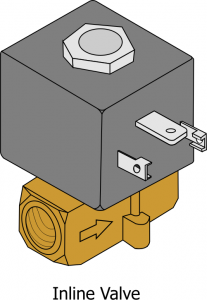


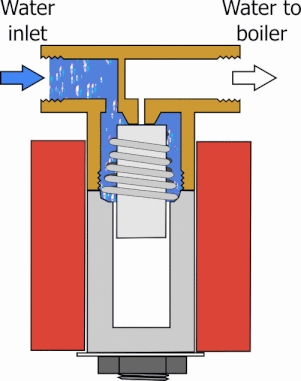
When the control circuit on the machine senses a low operating water level inside the boiler, a voltage is applied to the electrical coil on the solenoid .
The applied voltage then causes the shuttle inside the valve body to retract, which then allows water to flow through the solenoid and into the boiler.
Once the level in the boiler is at the correct set point, the voltage is removed and the shuttle returns to its closed state by the pressure from the spring mounted on the shuttle.
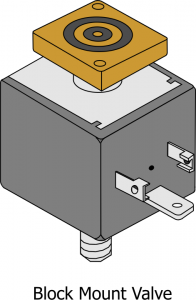

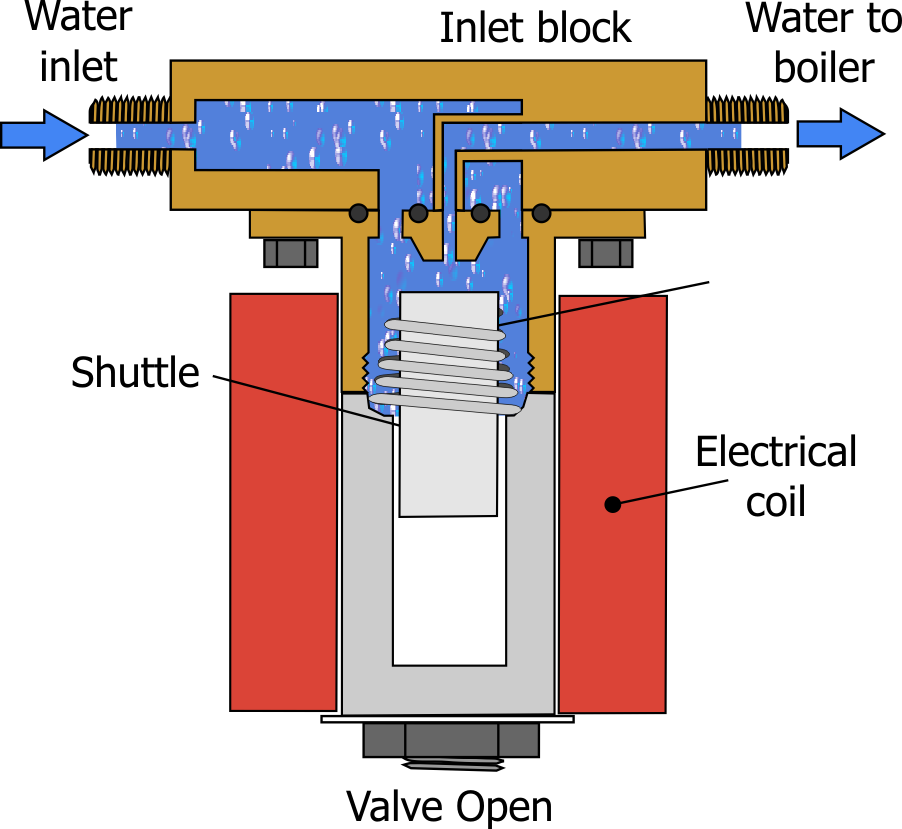
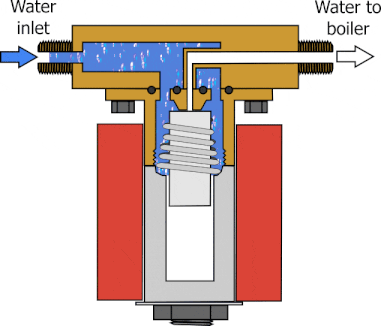
Operation of the block mounted inlet valve is exactly the same as the inline valve above.
The advantage of using a block for the inlet, is that other components like pressure relief valves and boiler drain connections can also be incorporated into the block assembly.
When the control circuit on the machine senses a low operating water level inside the boiler, a voltage is applied to the electrical coil on the solenoid .
The applied voltage then causes the shuttle inside the valve body to retract, which then allows water to flow through the solenoid and into the boiler.
Once the level in the boiler is at the correct set point, the voltage is removed and the shuttle returns to its closed state by the pressure from the spring mounted on the shuttle.
Can be caused by poor water treatment which could allow particles to lodge between the valve shuttle and body, thus allowing a small flow of water through to the boiler. This type of fault would be more noticeable the first thing in the morning after the machine has been switched off over night. Could be possible damage to the valve seat, so a replacement valve would be the preferred option.
Caused by a fault on the level probe in the boiler not sensing water level correctly. This could be a build of scale or other contaminate blocking the electrical circuit so the probe can not sense the water. Check the level probe circuit for cleanliness and correct electrical operation.
Solenoid coil open circuit. Check for supply at the coil and also coil resistance, and replace as necessary.
Valve and level probe have both checked out OK but still not filling. Faulty outlet from main PCB.
